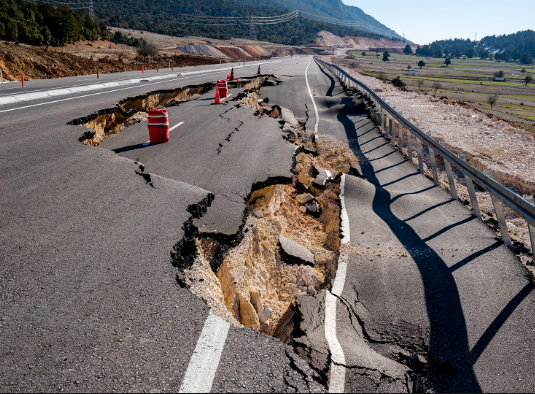Rehabilitating Degraded Land through Agro-forestry
The endeavor to rehabilitate degraded land through the strategic implementation of agro-forestry approaches is a harmonious symphony of ecological healing and biodiversity conservation. This transformative strategy resonates with the spirit of renewal, offering a pathway towards rejuvenating land that has endured the scars of degradation. Within the idyllic landscapes of Uttarakhand, this approach possesses the power to orchestrate a transformative narrative—one that rekindles the land’s vitality while nurturing the delicate dance of ecological equilibrium.
Agro-forestry, as a multidimensional strategy, beckons us to envision a landscape that transcends its current state of degradation. It encapsulates the notion of fostering harmony between agriculture and forestry, weaving a tapestry where diverse plant species coalesce in a symbiotic embrace. The essence of this approach is not mere cultivation; it is the cultivation of resilience, of sustainability, and of a future where land, community, and nature flourish hand in hand.
In the heart of Uttarakhand, this approach becomes a beacon of hope—an embodiment of the region’s spirit and the call for renewal. As the land’s health is tenderly nurtured back to vibrancy, a ripple effect is set in motion. Biodiversity, often imperiled by the specter of degradation, finds its haven amidst these green corridors. Flora and fauna, intricate threads in the fabric of life, find refuge within this mosaic of purposeful cultivation.
The underlying premise of agro-forestry carries the promise of synergy—a synergy between humanity and nature, between sustenance and preservation. The land that has borne witness to degradation is now offered a chance to flourish anew. The fragile balance that defines the intricate dance of ecosystems is carefully tended, safeguarding the very foundation upon which life thrives.
As we navigate the complexities of an evolving world, the approach of agro-forestry stands as a bridge—a bridge between challenges and solutions, between degradation and restoration. It is a clarion call to transform the narrative, to reimagine land not as a casualty of progress but as a canvas of potential. The spirit of Uttarakhand, with its verdant valleys and majestic peaks, is poised to resonate with this transformative energy—a testament to the resilience of both land and community.
In embracing agro-forestry, Uttarakhand embraces the promise of a future where land reclaims its vitality, where biodiversity flourishes, and where the threads of ecological balance are delicately woven into the fabric of existence. It is a journey not merely of cultivation, but of stewardship—an enduring commitment to the land, the community, and the enduring legacy of a harmonious coexistence.
Crafting an Eco-Development Policy Framework
The Himalayas, stretching from Indus to Brahmputra, cover 18% of India’s area, influencing the subcontinent’s climate and nourishing its plains with rivers. However, deforestation, overgrazing, and cultivation have led to soil erosion and increased flood frequency. The strategic importance and environmental fragility of the Himalayas became apparent after the Chinese aggression.
Previously, development needs of the Himalayas were overlooked until the fifth plan when sub-plan allocations were introduced. Since the sixth plan, Jammu and Kashmir, Himachal Pradesh, and the North East were treated as special category states. However, the central assistance remained limited compared to more populated regions like the Western Ghats.
The present Himalayan Policy is based on experience from previous plans and task force reports. Dr. Swaminathan’s task force noted the degradation of ecological environment and poverty among people relying on depleted resources. Incorrect agricultural practices and deforestation have led to soil erosion, water scarcity, and shortened dam lifespans.
The recommendations included determining correct land use, intensifying agriculture in suitable areas with irrigation, afforestation, grazing regulations, and limiting herds while improving stock. Coordinated research and inter-university coordination were also emphasized, aimed at sustainable development in the Himalayas.
Enhancing the Quality of Life in Villages
Improving the quality of life in Uttarakhand’s villages requires a holistic approach. By integrating economic, social, and environmental considerations, the state can create vibrant and thriving rural communities.
Forest Conservation: The Heart of Uttarakhand
Uttarakhand’s forests are its lifeblood, providing essential ecosystem services and supporting a vast array of wildlife. Forest conservation is non-negotiable for sustainable development and must be a priority in any eco-strategy.
The Forest Conservation Act of 1980 serves as a crucial measure to protect forest land from non-forestry activities. While this legislation is essential for safeguarding our natural resources, there are situations where the use of forest land becomes unavoidable. For instance, providing road connectivity or laying down essential infrastructure such as electricity, telephone lines, or water pipes may require access to forest areas. In such cases, obtaining prior approval from the central government is mandatory. However, this approval process often leads to delays in development activities, causing frustration among stakeholders.
Similarly, the Uttar Pradesh (Water and Air Pollution Control Act) includes provisions for granting non-objection certificates to small and cottage industries categorized as non-polluting or ‘green.’ In most regions, the General Manager of the District Industries Centre has the authority to issue these certificates. However, in Uttarakhand, this responsibility falls under the jurisdiction of the regional offices of the Uttar Pradesh Pollution Control Board located in Haldwani and Dehradun. Consequently, entrepreneurs in Uttarakhand face the inconvenience of shuttling between their proposed industrial sites in remote hills and the regional headquarters for obtaining approval.
The implementation of such provisions has sparked discontent among the public, leading to criticism of conservation laws. People’s sentiments are reminiscent of the strong emotions witnessed during the Chipko movement, a historic environmental movement that aimed to protect forests. Striking a balance between conservation efforts and facilitating essential development remains a challenge that requires careful consideration and efficient administrative processes.
Combating Forest Fires: An Ecological Imperative
Forest fires pose significant challenges to the ecological balance of Uttarakhand. By adopting an ecological perspective, the state can develop effective strategies to prevent and control these fires, protecting its forests and biodiversity.
Sustainable Land Utilization and Management
Efficient land utilization and management are essential components of sustainable development. Addressing the challenges of land use in the Central Himalayas is critical to ensuring the region’s ecological stability.
Asserting the Right to Development
Uttarakhand’s pioneering effort in asserting the right to development sets an inspiring precedent for other regions. By prioritizing human rights alongside sustainable progress, the state can become a beacon of inclusive and equitable growth.
Paving the Way for Development: Insights and Reflections
Finding the right development model for Uttarakhand requires thoughtful reflection and analysis of its unique characteristics and potential. Learning from past experiences and successes will pave the way for a prosperous future.







